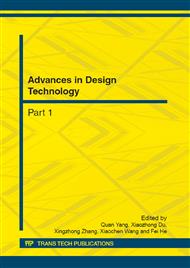p.946
p.950
p.955
p.959
p.964
p.970
p.974
p.978
p.982
Study on the Tractive Ability of Lunar Rover Wheel by Discrete Element Method
Abstract:
It is important to research the relationship between the lunar wheel and lunar soil in the circumstances of lunar surface in order that the lunar rover can work efficiently. Distinct Element Method (DEM) is an ideal method to analyze the relationship between lunar wheel and lunar soil. In this work, a prediction model for rigid-wheel and lunar soil is proposed, and the DEM model for lunar soil is found by the biax-test. The results show that the values of the simulation parameters in lunar soil are close to that of the real lunar soil after adjusting the micro simulation parameters. The Bekker’s model is used to calculate the pressure-sinkage, and the Janosi model is used to describe the shear characteristics. The plate-sinkage-test as well as the shear-test was simulated by PFC2D. The parameters of terra-mechanics were calculated based on the least square method. In the simulation, the value of K is 1635 kN/mn+2, n is 1.22 and k is 1.35 cm. After that, the soil bin system is simulated by the software PFC2D. Further, the tractive test which is checked out by the soil bin test and model calculation was simulated in PFC2D. Finally, by comparing the traffic ability of the nonrug-wheel with the rug-wheel, the results show that the slip radio is 0.52 of the rug-wheel and 3.21% of the nonrug-wheel under the traction load. The draw-bar pull is 121.67 N in the rug-wheel compared that of 7.71 N in nonrug-wheel under the slip is 10%.This indicates the rug-wheel can generate greater draw-bar pull and show better traffic ability than the nonrug-wheel under enough torque condition.
Info:
Periodical:
Pages:
964-969
Citation:
Online since:
November 2012
Authors:
Keywords:
Price:
Сopyright:
© 2012 Trans Tech Publications Ltd. All Rights Reserved
Share:
Citation:


